The film I watched is one of the most representative works of Yasujiro Ozu, which is named Late Spring. One of Ozu’s writing features is telling a flat story but reflecting a profound truth. The story told in this film is happened between a single father and his sole daughter. After the early death of her mother, Ji Zi, the daughter in the story, stick together with her father and help each other in difficulties, and both of them are reluctant to marry firstly, but at the end of the film Ji Zi married someone because of her father’s white lie, leaving her father spend the left time of life alone. I am deeply moved by the great affection between the father and the daughter. Actually, we can say that the greatest affection among human beings is the love between parents and their children, so this film is of illuminating influence for me to handle my relations with my parents.
As for the impressive moments or scenes in the film, I was deeply moved by the moment that the father cheated Ji Zi that he decided to remarry someone and persuade Ji Zi to pursuit her own happiness, by which the daughter could begin a new life frankly. Actually, all of our audiences know that it is a white lie or just an excuse of her father, which aims to not to delay the future of Ji Zi. What’s more, the flat conversations occurred many times in the film between the father and daughter also enlighten me a lot. In the film, Ji Zi more than once expressed her determination to accompany her father all the time and never marry someone, but at the end of the film, with the persuasion from her father, she finally gave up her obsession. But indeed it was a kind of great love and responsibility as a child and the only partner of the old man in the world.
There are also some critical voices about the film. As audiences find, most of Ozu’s films are about the misfortunes in a family and some are about the topic that daughters refuse to get married and leave the family. Some may regard this is not a positive topic and the consistent techniques used in his film are dull frames, still scenes and inconspicuous sound effects, which are not encouraging and attractive for the audience. But my opinion is the opposite, it is the simpleness of the story and scenes that bring up a great and thought-provoking work. The common topics between parents and their children are also a light spot of his works, which is an everlasting issue in the world.
The excellence and success of the film Late Spring is definite. First, Ozu has a unique shooting character and a special way to tell a story to his audiences. Also, his success is due to the details of his emotional processing and hidden principles. What’s more, it is the emotional resonance with most audiences that make his works famous and valuable. So, we can find that most of the great films are successful for their unique detail processing techniques and the historical and practical significance for people’s life in modern society.
Sources
https://film.avclub.com/yasujiro-ozu-s-quietly-staggering-late-spring-returns-i-1798186831

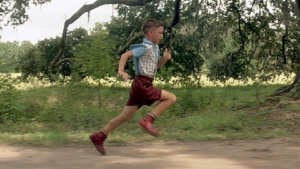


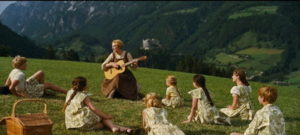
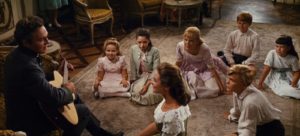
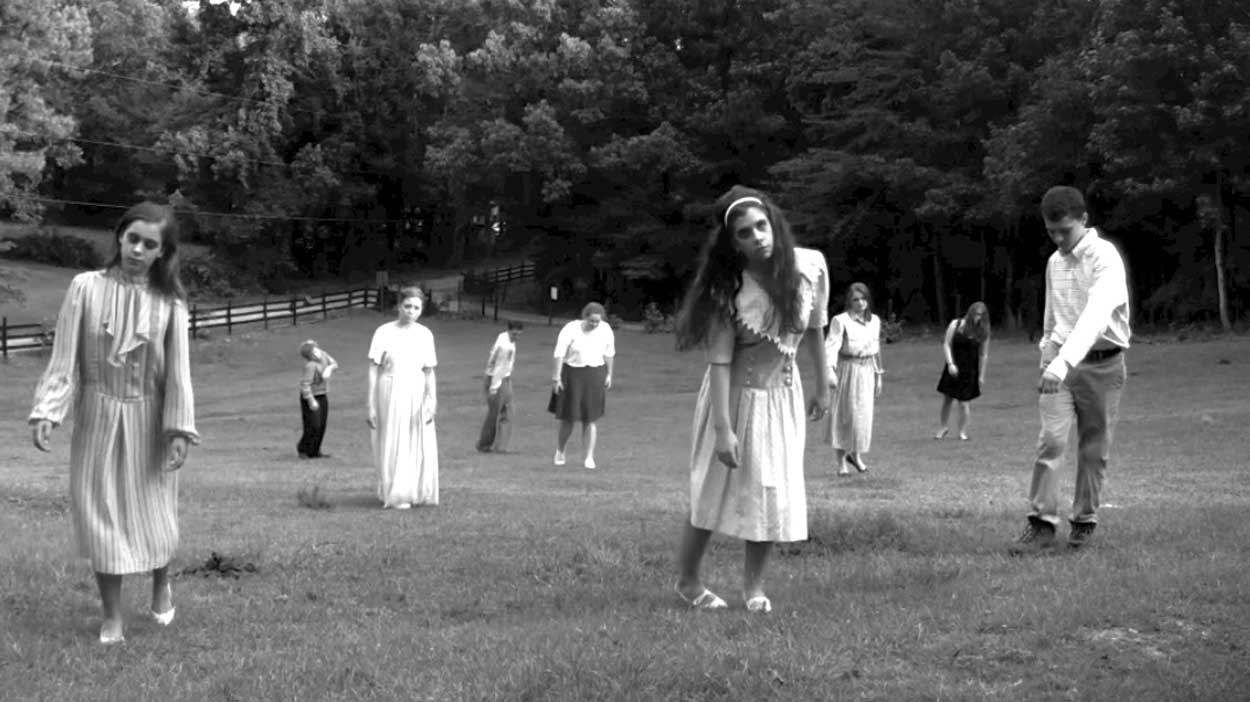

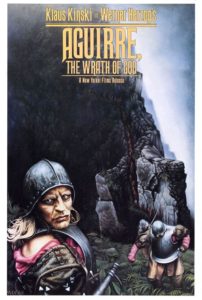 Aguirre, the Wrath of God is a West German-Mexican-Peruvian historical drama. It was directed by Werner Herzog, a German director, in the year 1972. The story takes place in 16th-century Peru. In the beginning the camera pans over a beautiful view of the Andes mountains. On those mountains was a large group of Spanish conquistadors on their mission to find the mythical city El Dorado. The travelers believed that El Dorado was a city with massive amounts of gold and that they could conquer it. After some time the men decided that they would create a group of 40 men that would go off on their own expedition. They were given one week to find more information on El Dorado or the natives living in the jungle or that they would be presumed dead.
Aguirre, the Wrath of God is a West German-Mexican-Peruvian historical drama. It was directed by Werner Herzog, a German director, in the year 1972. The story takes place in 16th-century Peru. In the beginning the camera pans over a beautiful view of the Andes mountains. On those mountains was a large group of Spanish conquistadors on their mission to find the mythical city El Dorado. The travelers believed that El Dorado was a city with massive amounts of gold and that they could conquer it. After some time the men decided that they would create a group of 40 men that would go off on their own expedition. They were given one week to find more information on El Dorado or the natives living in the jungle or that they would be presumed dead. 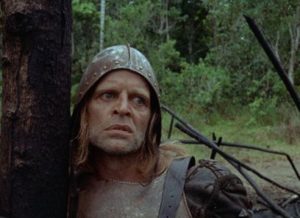 Another interesting aspect to the production was the main actor Klaus Kinski. Herzog had “described his relationship with Kinski as two oppositional forces of Nature that when joined reach a critical mass” (Deep Focus Review). Kinski’s overbearing nature is actually what landed him the part. Before playing in Aguirre, the Wrath of God Kinski played a theatrical Jesus on tour. He would basically stand on a stage with a microphone and rant about how he was Jesus and he would insult the audience who would then insult him back. While he was on the set of Aguirre, the Wrath of God he wasn’t much better. It was reported that one night he was upset about some locals being “too noisy” in their tent so he took his rifle and fired off three shots into the tent. One man was shot in the hand and almost lost his finger but thankfully nobody was killed. Kinski didn’t get in much trouble for his actions, Herzog just took away his rifle. It might seem like a crazy light punishment but it seemed Herzog was a bit crazy as well. Kinski had finally threatened to leave the production altogether and Herzog responded by saying that “the film was more important than either of them—and that if Kinski tried to leave, Herzog would get his rifle and put eight of the nine rounds into Kinski’s head, and then save the last one for himself” (Deep Focus Review) so as you can see both the heads of the production were quite unstable.
Another interesting aspect to the production was the main actor Klaus Kinski. Herzog had “described his relationship with Kinski as two oppositional forces of Nature that when joined reach a critical mass” (Deep Focus Review). Kinski’s overbearing nature is actually what landed him the part. Before playing in Aguirre, the Wrath of God Kinski played a theatrical Jesus on tour. He would basically stand on a stage with a microphone and rant about how he was Jesus and he would insult the audience who would then insult him back. While he was on the set of Aguirre, the Wrath of God he wasn’t much better. It was reported that one night he was upset about some locals being “too noisy” in their tent so he took his rifle and fired off three shots into the tent. One man was shot in the hand and almost lost his finger but thankfully nobody was killed. Kinski didn’t get in much trouble for his actions, Herzog just took away his rifle. It might seem like a crazy light punishment but it seemed Herzog was a bit crazy as well. Kinski had finally threatened to leave the production altogether and Herzog responded by saying that “the film was more important than either of them—and that if Kinski tried to leave, Herzog would get his rifle and put eight of the nine rounds into Kinski’s head, and then save the last one for himself” (Deep Focus Review) so as you can see both the heads of the production were quite unstable.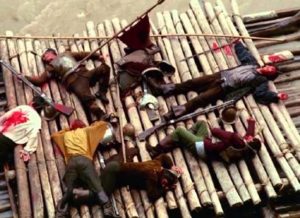 real explosions but when it came to things like blood it was very obviously bright red paint being splattered. One element focused on heavily in the film is noise. Almost the entire film there’s constant chattering of animals in the jungle or the rushing water in the rapids beneath them. Occasionally Herzog would cut all of the noise and make everything disturbingly silent. This was to make the viewers uncomfortable, like the characters were in the movie, because it always followed with a wild attack from the cannibalistic natives hiding in the jungle.
real explosions but when it came to things like blood it was very obviously bright red paint being splattered. One element focused on heavily in the film is noise. Almost the entire film there’s constant chattering of animals in the jungle or the rushing water in the rapids beneath them. Occasionally Herzog would cut all of the noise and make everything disturbingly silent. This was to make the viewers uncomfortable, like the characters were in the movie, because it always followed with a wild attack from the cannibalistic natives hiding in the jungle.